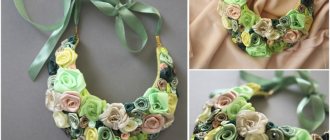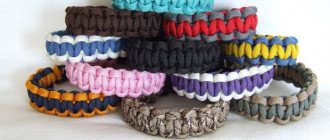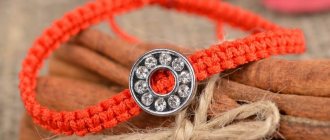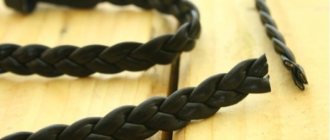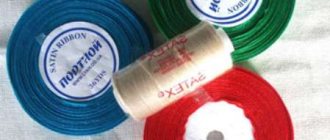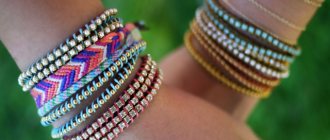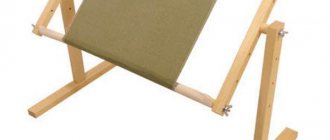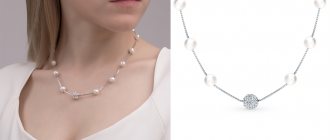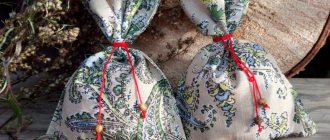We are unlikely to be able to list all types of bracelets. After all, they are often not just a fashion accessory, but also an amulet or a symbol of belonging to a certain subculture. It is difficult to describe all the variety of these decorations, but their main groups can be identified. So, what types of bracelets are there?
First of all, these are female, male and children's varieties. Men's wrist bracelets are characterized by restraint, minimalism, and elegant simplicity. Children's bracelets correspond to the age and interests of fashionistas and fashionistas - bright, cheerful, dedicated to children's themes and cartoon characters. The largest and most diverse group consists of women's bracelets.
Types of bracelets
The very first, according to archaeologists, were bracelets that were worn on the legs. They – and they are called questionnaires – still exist today. In addition to the forms, there are actually bracelets - those that decorate the wrists; hoop bracelets worn above the elbow, and even bracelets worn in the middle of the palm - from the indentation between the thumb and index finger to the opposite edge.
Depending on the design, bracelets are divided into hard and soft .
The “family” of hard ones includes:
- hinged products - consisting of two parts, fastened with movable joints, and equipped with a lock.
- Spring rings or rings with a connector. They can be simple, in the form of a single turn or spiral.
- Closed, non-breaking decorations, the diameter of which is not adjustable.
The “world” of soft bracelets is even more diverse. This:
- glider, that is, decorations made of individual decorative fragments linked by hinges or springs.
Glider bracelets
- Chain bracelets, consisting of links of the same or different sizes and shapes.
Chain bracelets
- Braided bracelets - they are made from thin, delicately intertwined chains or wires.
Braided bracelets
- Slave or pannier are original jewelry that combines a bracelet and a ring using one or more chains.
Pannier bracelet
- Jewelry bracelets are those that consist of beads, rhinestones, and gems attached to a fishing line or other base.
In addition, there are so-called bracers - wide bracelets in the ancient Russian style, which are used to compress the sleeves.
Types of chain weaving
These products are incredibly varied depending on the method of weaving the chain. For example:
- anchor are called bracelets made of chains, the links of which are adjacent to each other perpendicularly. Moreover, if the links are round, then you have a rollo chain.
Anchor weaving - In armored chains, the links are oval, they resemble figure eights and lie in the same plane.
Armor chain - Figaro - a modification of an armored chain in which rounded links alternate with elongated ones.
Figaro - Perlina – bracelet chain with links in the shape of pearls.
Perlina - Diamond – the links of these bracelets are similar, as you might guess, to rhombuses.
Diamond weave (“Double Diamond”) - Venetian chains resemble anchor chains, but their links are flatter, wider, and in the shape of squares or rectangles.
Venetian chain - Byzantine chains can be easily identified by the combination of curls, “eights”, “balls”, creating a bizarre, three-dimensional pattern.
Byzantine chain - Royal weave – a Byzantine type, the links in this case are similar to crowns.
Royal weave - Singapore weave They are made from small, slightly curved rings, which subsequently creates the effect of a twisted bracelet.
Singapore weave - Nonna – accessories made of round links, each of which has a smaller link inside.
Nonna - Fox's tail - a technique of compressed weaving, in which the jeweler seems to layer link upon link, leaving no gaps.
Fox's tail - Bismarck (kaiser, cardinal, brook) – a dense bracelet of fancy workmanship. This is one of the strongest chain options because its spiral links are screwed into each other.
Bismarck - Bracelets snake or lace consists of perfectly fitted and polished “scales” that merge into a continuous “snake skin”.
“Snake” weaving
And if the snake chains are woven together, then you have a bracelet using the “French braid” technique. - Ear - a jewelry technique that involves the use of a large number of curved links connected to each other with virtually no gap.
Weaving "Spike" - Love bracelet – an accessory made of heart-shaped links.
Weaving "Love" - Cord weaving - a labor-intensive ornate technique. The links in this case are intertwined in such a way that they resemble convex waves.
Cord weaving - Bird's eye – this bracelet is made up of links, each of which looks like a bird’s eye.
Bird's eye weave - Snail – the links of this decoration are complemented with curls.
Weaving "Snail"
Some of these weaves are mainly suitable for women, others for men, but most are quite universal and suitable for everyone.
Bracelets models
In the fashion world, new styles of jewelry appear every now and then, and bracelets are not lagging behind in this race. Let's try to list the most trending ones.
- Charm bracelet.
Accessory with interchangeable pendants, pendants and key rings. These can be pebbles, figurines, keys, amulets... And even miniature portraits of loved ones, as, for example, was customary in the Victorian era. - Tennis.
They owe their appearance to multiple Grand Slam winner Christina Evert. The tennis player claimed that she was winning thanks to her talisman - an exquisite diamond bracelet. Since then, precious bracelets inlaid with precious stones have been called tennis bracelets. - Fenugreek – jewelers “borrowed” this model from Buddhist monks.
Shambhala bracelets are similar to mantra beads and are large beads woven into threads or cords. - Cuffs – wide bracelets worn on the sleeves.
- Studded – brutal bracelets, decorated with applied metal inserts.
Favorite among rockers and many other subcultures. - Mit Bracelets - multi-tiered jewelry covering not only the wrist, but half of the palm to the fingers.
- Watch bracelets are products whose main decorative element is the dial.
- Fitness bracelet – a gadget decoration with many useful options: counting steps, heart rate, sleep time, etc.
Of course, bracelets are also conventionally divided into women's, men's, unisex and children's.
What materials are bracelets made from?
• Gold, platinum, silver; • any other metals and alloys; • bones, tusks, horns, teeth, animal shells; • leather and suede; • stones, crystals; • glass; • ceramics; • wood; • textiles; • beads and seed beads; • rubber; • silicone; • plastic.
Leather and wooden jewelry complement the look in ethnic and boho styles; Multi-colored plastic or shell bracelets look great in summer; products with stones and a scattering of rhinestones complement the formal evening look, and metal bracelets, decorated with logos, emphasize the relevance of the image and add elegance.
Types of earrings, models, selection rules
Profiles
A bracelet worn on the leg. More often it is a thin chain of precious metal. Usually chosen by young girls who prefer an informal style of clothing.
Silver ankle bracelet with cubic zirconia, SL (price on the link)
Types of clasps on bracelets
Bracelets can be without a lock at all or can be closed using a button, latch, Velcro, or zipper. The clasp of a quality piece of jewelry is both a guarantee of its reliability and a component of aesthetics.
The most popular types of bracelet clasps:
- springel _ This is a well-known ring with a spring and a lever that you move with your finger.
- Carabiner locks , consisting of a loop with a bracket and a ring. Such mounts are much more powerful, but also more noticeable and heavier.
- Screw locks can be seen on antique bracelets: they consist of two halves, one of which is screwed into the other.
- Box – massive flat bracelets are equipped with a similar lock. It really is made in the form of a box with a latch inside.
- Hinge locks hold rigid and glider jewelry. These fasteners are made up of two parts and a pin.
- A toggle lock is also called a crutch. The principle of coupling is simple: a T-shaped stick is inserted into a round ring.
- The hook clasp - and it really is a hook and loop - is one of the oldest bracelet fastenings.
Important. The clasp must match the weight of the bracelet, its dimensions and, of course, the style. High-quality, traditional locks are in harmony with expensive, classic models, and bracelets made of cords, ribbons and plastic beads, so-called baubles, can get by with light, simple latches.
Bracelets for men
Yes, such an accessory with a long history adorns both women's and men's hands. This is the main secret of the immortal popularity of bracelets, because, according to psychologists, we pay attention to a person’s hands first of all.
Men began to wear bracelets earlier than women; pharaohs, ancient patricians and Old Testament kings emphasized their high birth and influence with them.
Today, laconic men's bracelets with minimalist decor are popular. And not only from precious metals: at the peak of demand are tungsten carbide, stainless steel, rubber, ceramics, leather, chains and ropes... The choice depends, stylists clarify, on the purpose, costume and image.
Straps and bracelets for watches: types, models, selection rules
Historical reference
The first bracelets appeared in primitive society.
They were woven from tree bark and leather, and later made from bone and stone. Hunters tied their wrists with a leather band to avoid injury when throwing a spear. In antiquity, such accessories were made of copper, bronze, gold, silver, and were worn by both men and women. The ancient Romans decorated them with images of animals, the Egyptians with fantastic creatures, and the Greeks made engravings in the form of plants and gods. During this period, such an accessory showed what class a person belonged to.
Among the pagans, the bracelet played the role of a talisman, protecting against enemies, the evil eye and evil spirits. The creation of such a mystical item was a real ritual; it had to be worn constantly.
In Orthodox Rus' it was considered simply a decoration. Noble ladies preferred to decorate their wrists with gold and silver with precious stones; peasants made their own from cheaper materials .
Warriors wore leggings and bracers to protect their legs and arms. Knights wore baubles given by their lovers as a sign of love.
Over time, practicality and secret meaning faded into the background and bracelets became only an adornment for often women's and rarely men's hands.
Etiquette for wearing bracelets
Women are free to choose whatever bracelets they want. However, this permissiveness is regulated by the rules of wearing.
- The bracelet must match other jewelry - rings, earrings, necklace. Thus, sophisticated dangle earrings do not match with a wide, rough or too colorful bracelet, and a necklace made of large beads does not match with a bracelet made of small pearls or beads.
- The best “partners” for a bracelet are earrings, a brooch or a choker.
- The larger and more noticeable the earrings, brooch or ring, the stricter the bracelet should be.
- The bracelet is worn on the wrist opposite the lapel to which the brooch is attached.
- Decorate with a bracelet the hand in which you hold a clutch or handbag.
- A particularly fashionable trend is the abundance of bracelets, a pile of accessories on one hand, sometimes from the hand to the forearm. For example, a leather bracelet is complemented with chains made of silver, brass or bronze, cord bracelets, and wooden decorations.
- Thin wrists look charming with narrow and wide through bracelets, with chains hung with charms, with “gypsy” hoops.
- Full hands will be made more attractive by shamballa bracelets, jewelry with large stones, massive beads, and bright enamel inserts.
- For a dress with a lowered shoulder, the bracelet is put on the hand on the half-exposed side.
- A bracelet on the sleeve is worn only if the cuff is not decorated with print or embroidery. This accessory does not go well with puffy, richly decorated sleeves.
- Traditionally, the bracelet is worn on the hand opposite the one on which the watch is worn. However, today this rule has been greatly undermined. Moreover, several bracelets and watches between them can create a single stylish conglomerate.
You can wear bracelets on any hand, however, the more bracelets, the fewer rings you put on your fingers. Don’t overload your hands with assorted crafts; remember that moderation is the main criterion of good taste.
Interesting combinations
Even such a simple accessory requires careful selection in order to truly harmonize with its owner. You can always be guided by your imagination, but these trendy variations of bracelet combinations have already become classics.
- A delicate piece of jewelry consisting of a thin gold or silver chain with several gem beads will perfectly complement your evening look. Delicate jewelry will go well with a dress with short sleeves.
- Massive metal bracelets with large inserts are easy to combine with a formal suit or overalls. This option can be worn every day without worrying about the jewelry being damaged or slipping off your hand.
- Feel like the brightest girl at the party by completing your look with a shamballa bracelet made of rhinestones or precious stones.
- For a walk or a resort, you can safely wear original spiral bracelets, as well as jewelry that is fastened with a strap or button.
Sources
- https://www.Kleo.ru/items/fashion/modnyye-braslety-2021.shtml
- https://www.AllTime.ru/blog/?page=post&blog=watchblog&post_id=modnye-muzhskie-zhenskie-i-detskie-braslety
- https://fashionhot.ru/modnye-braslety/
- https://boroda.land/collection/braslety
- https://NovaFashion.ru/braslety-2018
- https://sokolov.ru/blog/moda/fashion/trendy-bracelets-fall-winter-2020/
- https://obliqo.ru/vse-vidy-brasletov-spisok-s-foto/
- https://www.tsum.ru/catalog/braslety-18562/
- https://www.KupiVip.ru/catalog/zhenschinam/sumki-i-aksessuary/ukrasheniya-i-bizhuteriya/bizhuteriya/braslety
[collapse]
